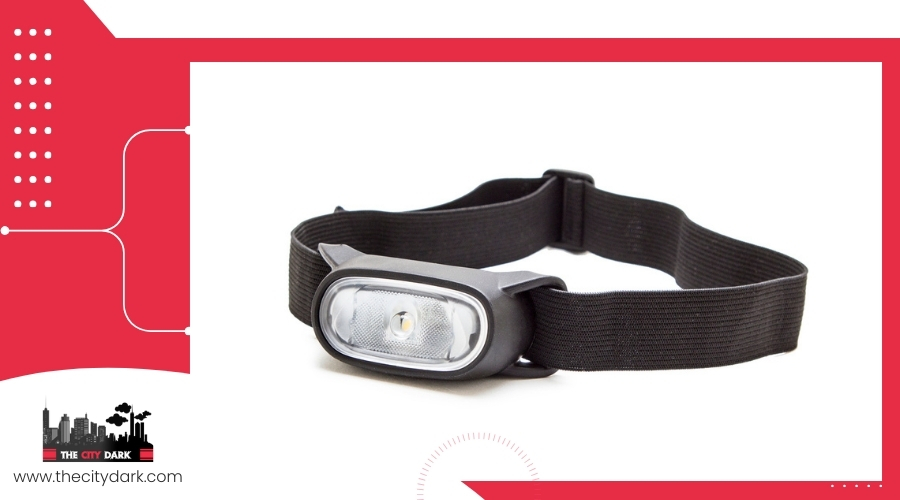Eco-Friendly Emergency Lighting Options

When exploring eco-friendly emergency lighting options, you'll find that they are not only advantageous for the environment but also efficient and dependable. Options include LED lights, solar-powered systems, and battery backups. LEDs offer long-lasting illumination with low energy consumption, while solar-powered lights harness renewable energy, reducing your carbon footprint. Battery backups, such as those using Lithium or NiMH, ensure preparedness during power outages. But what sets these choices apart, and how do they enhance both sustainability and safety? Let's delve into their key benefits and features.
Importance of Eco-Friendly Lighting

Eco-friendly lighting is essential because it significantly reduces energy consumption and lowers carbon emissions. By choosing sustainable options like LED emergency lighting, you actively contribute to environmental preservation. LED emergency lights are highly energy-efficient and durable, utilizing less power than traditional lighting, which leads to cost savings and a reduced carbon footprint.
Switching to LED emergency lighting is an effective way to decrease reliance on nonrenewable energy sources such as coal and petroleum. These LEDs are designed for longevity and require minimal maintenance, making them a cost-effective solution for emergency lighting. Additionally, eco-friendly options like photoluminescent exit signs further enhance energy conservation efforts.
Types of Emergency Lighting
When considering sustainable options, it's important to understand the different types of emergency lighting available. Emergency lights come in various styles, colors, and mounting options, designed for both indoor and outdoor use. These lights are essential for providing visibility during power outages or emergencies, helping prevent accidents and save lives.
Exit signs are a specific type of emergency lighting used to mark exits clearly, ensuring everyone can find a safe exit in a crisis. They must comply with OSHA, NFPA codes, and International Building Code standards for safety and reliability. You'll find them in various designs, including pictograms and words, often illuminated to be visible even in smoke or low-light situations.
Different battery backup options like Sealed Lead-Acid, NiCad, NiMH, and Lithium batteries cater to different needs, ensuring that emergency lights remain functional during power failures. Each battery type offers specific benefits, such as longer life or greater energy efficiency, contributing to the sustainability of your lighting solution.
LED Emergency Lights

LED emergency lights provide a modern, energy-efficient solution for reliable illumination during power outages or emergencies. These lights consume significantly less power compared to traditional options and have a much longer lifespan, lasting up to 80,000 hours. This extended lifespan reduces the need for frequent replacements and maintenance, making them a cost-effective choice for emergency lighting.
Environmentally friendly, LED emergency lights produce less heat and do not contain harmful substances like mercury, making them a safe and green option for homes and businesses. Many models are equipped with rechargeable batteries, ensuring functionality during extended power outages. Whether for emergency exits or general safety, LED lights offer bright, reliable illumination.
Comparison of LED Emergency Lights vs. Traditional Lighting:
| Feature | LED Emergency Lights | Traditional Lighting |
|---|---|---|
| Energy Efficiency | High | Low |
| Lifespan | Up to 80,000 hours | Shorter lifespan |
| Environmental Impact | Eco-friendly, no mercury | Contains mercury, more heat |
| Maintenance Costs | Low | High |
Solar-Powered Options
When considering solar-powered emergency lights, you'll appreciate their use of renewable energy, which reduces electricity costs and carbon emissions. These lights are efficient and durable due to LED technology, and they're also easy to install and maintain. Choosing solar-powered emergency lights is a cost-effective, eco-friendly solution for emergency preparedness.
Renewable Energy Source
Solar-powered emergency lights harness the sun's energy to provide reliable illumination during power outages. By utilizing efficient solar panels, these lights ensure maximum energy absorption and conversion, keeping them bright when needed most. Using solar power reduces electricity consumption and decreases reliance on nonrenewable energy sources.
The environmental impact of solar-powered emergency lights is significantly lower than that of traditional lighting options. These lights help reduce carbon emissions, contributing to the fight against climate change. Additionally, the use of efficient LED technology ensures bright, long-lasting illumination, minimizing the need for frequent replacements and thereby reducing waste.
Investing in solar-powered emergency lights is a proactive step towards a sustainable and energy-efficient future. These lights prepare you for emergencies while making a positive environmental impact. They offer a dependable and eco-friendly solution that aligns with modern sustainability goals. Therefore, when considering emergency lighting options, solar-powered lights stand out for their efficiency, sustainability, and minimal environmental footprint.
Cost and Efficiency
Solar-powered emergency lights offer a cost-effective and efficient solution for reliable illumination during power outages by harnessing sunlight for energy. Utilizing solar energy reduces electricity costs, leading to substantial energy savings over time and eliminating concerns about increasing utility bills. This makes solar-powered lights a wise financial choice for both households and businesses.
In addition to cost savings, solar-powered emergency lights have a positive environmental impact. They rely on renewable energy, which means they don't contribute to carbon emissions. By choosing these eco-friendly lights, you actively reduce your carbon footprint and promote a sustainable environment. This is a meaningful step towards greener living.
One of the standout benefits of solar-powered emergency lights is their longevity. Traditional lights often require frequent replacements, but solar-powered options typically last longer due to their reliance on renewable energy sources. This extended lifespan results in fewer replacements and less waste, enhancing their cost-effectiveness further.
Ideal for outdoor use, solar emergency lights provide reliable illumination without the need for grid power. Investing in these lights decreases dependence on nonrenewable energy sources and supports green living practices, making them a practical and responsible choice.
Installation and Maintenance
Setting up solar-powered emergency lights is straightforward and requires minimal effort, as they don't depend on traditional power sources. Simply place the lights where they can receive ample sunlight exposure, ensuring that the solar cells can efficiently convert sunlight into electricity to charge the internal rechargeable batteries for nighttime use.
Maintaining these lights is also hassle-free. Regularly clean the solar panels to remove dust, leaves, or any debris that might obstruct sunlight. For cleaning, use a soft cloth or sponge with mild soap and water. Avoid using rough materials that could scratch the panels. Keeping the panels clean will maximize their ability to absorb sunlight and ensure optimal performance.
If any issues arise, consider these basic troubleshooting steps. First, check the batteries; they may need replacement if they aren't holding a charge. Ensure the solar panel isn't shaded by trees or buildings, as insufficient sunlight can affect performance. Finally, inspect the wiring and connections for any signs of damage or corrosion.
Battery Backup Systems

When evaluating battery backup systems for eco-friendly emergency lighting, consider the types of batteries available, such as Lithium, NiCad, and NiMH. Each type offers distinct benefits in terms of lifespan and energy efficiency. Assessing these factors will enable you to select the most sustainable and effective option for your needs.
Types of Batteries
Selecting the appropriate battery type for your emergency lighting system is crucial for ensuring both reliability and performance during power outages. Among energy-efficient options, sealed Lead-Acid batteries are a popular choice due to their dependability and long lifespan. While they may not be the most advanced in terms of sustainable technology, they strike a good balance between cost and performance.
Nickel-Cadmium (NiCad) batteries are another viable option, especially noted for their rapid recharge capabilities, which can be advantageous during frequent power outages. However, their environmental impact is less favorable due to the presence of toxic materials. For a more sustainable option with higher energy density, Nickel-Metal Hydride (NiMH) batteries are an improvement over NiCad. They offer a longer cycle life and are less harmful to the environment.
Lithium batteries are distinguished by their lightweight, compact design, and longer shelf life. These characteristics make them ideal for high-demand applications, although their production and disposal pose significant environmental challenges.
Battery Lifespan Considerations
Understanding battery lifespan considerations is crucial for maximizing the efficiency and reliability of your eco-friendly emergency lighting system. Regular maintenance is essential. Periodic testing of battery backup systems ensures they're operational when needed. Lithium batteries, known for their long lifespans and high energy density, still require regular testing to maintain peak performance.
Several factors influence battery longevity. The lifespan of batteries in eco-friendly emergency lights typically ranges from 3 to 10 years, depending on usage patterns, charging cycles, and maintenance practices. Proper care can extend their lifespan, while neglect can significantly shorten it.
Storage conditions are equally important. Batteries should be stored in a cool, dry place to prevent degradation. Avoiding extreme temperatures and humidity can significantly extend their usable life. Attention to these details not only enhances the reliability of your emergency lighting but also contributes to energy efficiency and reduced operational costs.
Energy Efficiency Benefits
Eco-conscious emergency lighting with energy-saving battery backup systems offers reliable illumination while reducing energy usage and costs. By selecting LED emergency lights with rechargeable lithium batteries, you can significantly decrease your energy consumption and environmental impact. These systems guarantee that your emergency lights stay on for at least 90 minutes after a power outage, ensuring dependable performance when you need it most.
Investing in these energy-saving solutions brings long-term benefits. Not only do they contribute to sustainability by minimizing energy wastage, but they also help reduce your electricity bills. This cost-effectiveness makes them a smart choice for both your finances and the environment. Over time, the reduced energy consumption of these systems results in substantial energy savings, reinforcing your commitment to green building practices and energy conservation efforts.
Moreover, the advanced technology in these battery backup systems ensures they're both reliable and durable. You'll appreciate the peace of mind that comes with knowing your emergency lighting is eco-friendly and efficient.
Code Compliance
Ensuring your emergency lighting complies with OSHA, NFPA codes, and the International Building Code is crucial for both safety and regulatory adherence. Meeting these requirements safeguards occupants during emergencies and helps minimize environmental impact. Compliance mandates that emergency lights provide at least 90 minutes of illumination following a power outage, ensuring safe evacuation routes.
Navigating compliance challenges can be complex, especially when balancing sustainability benefits. Local jurisdiction codes, such as those in Chicago and New York, add additional layers of complexity. Staying updated with these local regulations is essential to avoid penalties and ensure your emergency lighting systems meet all applicable codes. Eco-friendly solutions can simplify compliance by offering energy-efficient options that fulfill all necessary standards.
Emergency lighting standards ensure consistency and reliability across various settings, including residential, industrial, and commercial buildings. By opting for eco-friendly solutions, you not only meet these stringent standards but also contribute to environmental sustainability. Proper installation and regular maintenance are crucial for keeping these systems operational, reducing the risk of accidents, and ensuring continuous compliance.
Benefits of Sustainable Lighting

Opting for sustainable lighting solutions provides both environmental and economic advantages. Eco-friendly emergency lights, such as LEDs and photoluminescent exit signs, can reduce energy consumption by up to 80% compared to traditional incandescent signs. This significant reduction in energy usage translates into lower utility bills and a smaller carbon footprint, contributing positively to the environment.
Key benefits include:
- Remarkable energy efficiency: LED and photoluminescent options drastically reduce energy consumption.
- Extended lifespan: LEDs can last up to 100,000 hours, minimizing waste and maintenance costs.
- Reduced carbon emissions: Eco-friendly lighting options help lower greenhouse gas emissions.
- No electricity needed for photoluminescent signs: These signs charge from ambient light, eliminating additional energy use.
- Alignment with green initiatives: Sustainable lighting supports energy efficiency goals and corporate sustainability.
Additionally, these sustainable lighting solutions offer long-term savings. While the initial investment may be higher, the reduced energy costs and decreased need for replacements make it cost-effective over time.
Conclusion
Eco-friendly emergency lighting options such as LEDs, solar-powered systems, and battery backups offer numerous advantages. These sustainable solutions not only enhance safety and ensure code compliance but also contribute to environmental preservation and energy conservation. By opting for these green alternatives, you're supporting a more sustainable future. Therefore, when considering emergency lighting, choose eco-friendly options. It's a wise decision for both your safety and the planet.




